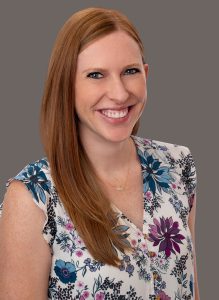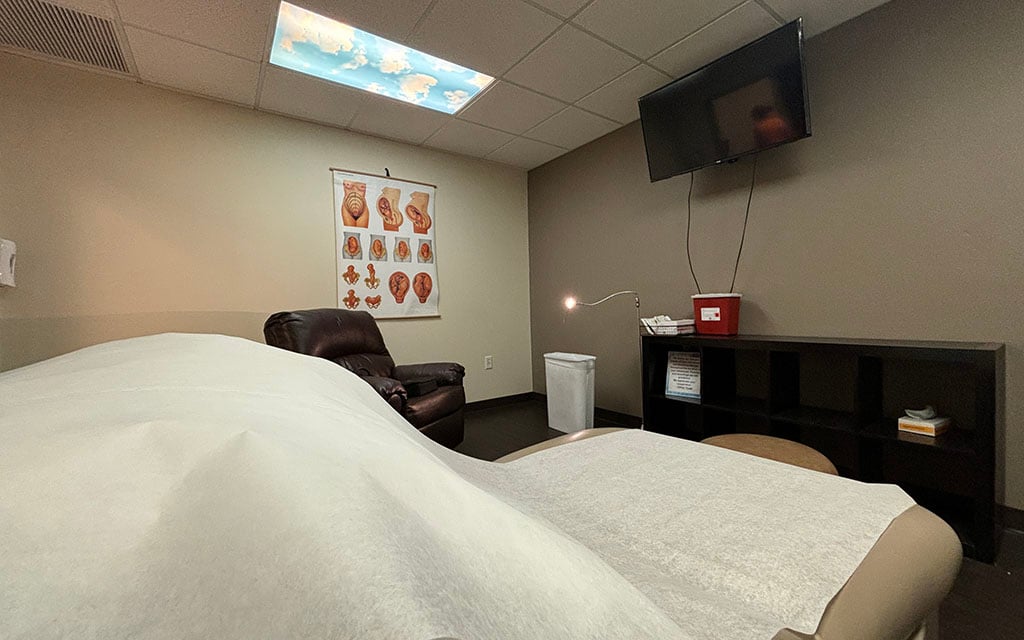PHOENIX – Dr. Gail Petersen Hock was making dinner for her family on a Friday night in 1982 when her OB-GYN called her.
“He said, ‘I want you to sit down,’” she recalled. “‘We found cancer in your cervix, and you need to have surgery next week.’”
“It was a surprise to me,” she said.
Petersen Hock, 69, was 27 at the time of her cervical cancer diagnosis, and her treatments lasted for almost two decades. She counted herself lucky.
“I had biopsies every six months until I was well into my 40s,” she said. “And I was treated with TCA (tricarboxylic acid), which is very strong acid, at one point after I was 40 years old – and haven’t had a problem since, but I am one of the lucky ones.”

Dr. Gail Petersen Hock talks about her experience with cervical cancer, both as a survivor and an advanced practice public health nurse. (Screenshot by Regan Gallo/Cronkite News)
Because of her experience, Petersen Hock is committed to decreasing cervical cancer incidence rates through education about screenings and related vaccinations, serving as the co-leader of the Arizona chapter of the National Cervical Cancer Coalition. She and other health providers hope the new Food and Drug Administration-approved cervical cancer self-test will make screenings more accessible and decrease cervical cancer rates.
On average over 200 women in Arizona are diagnosed with cervical cancer every year, according to 2016-2020 data from the National Cancer Institute and the Centers for Disease Control and Prevention. Nationally, the cervical cancer five-year survival rate is 67%, according to NCI data.
However, according to Dr. Sharon Thompson, CEO and primary physician at Central Phoenix Obstetrics & Gynecology, cervical cancer is preventable through proper screening.
“There are precursors to cervix cancer that don’t just arise out of the blue,” she said. “You have changes that happen in the cervix before you get to cancer, and if we can detect those changes and treat them, then we can prevent cervical cancer.”
To detect cervical cancer, people are screened with a Pap smear or human papillomavirus (HPV) test because most cervical cancers are traced back to an HPV infection. During these tests, a clinician uses a speculum to hold the vaginal walls open and takes a sample of cells from a patient’s cervix using a brush, a process that can be uncomfortable.
With the self-test, a patient would insert a cotton swab or similar instrument into the vagina to take the collection of cells. The collection is done in a clinic, and the clinician sends the sample to a lab.

Dr. Sharon Thompson, CEO and primary care provider at Central Phoenix Obstetrics & Gynecology, believes that the cervical cancer self-test could have a lasting impact on screening rates, as long as proper follow-up care is in place. (Photo courtesy of Sharon Thompson)
“Pretty much if you can access your vagina or someone can, you can get the appropriate swab,” Thompson said. “It doesn’t have to go anywhere specific because we know that the entire vagina will contain the sampling that we need.”
This technology isn’t new for providers like Dr. Caitlin Lee, the medical director of quality and director of health equity at Wesley Community and Health Centers.
“It’s something that even though it’s kind of an off-label use, we have used,” she said. “I actually just got a result back on a patient this morning for a cervical cancer screening that I had a patient do a self-collected swab on last week in clinic because of the history of trauma.”
After getting results from the lab, a doctor would contact the patient. If further testing is needed, such as after an abnormal specimen is detected, the doctor would explain what follow-up care could look like. But, ensuring that a patient receives the appropriate follow-up care is a concern for some providers.
“What happens if someone has a positive result?” Thompson said. “If these tests are for people who don’t have access to care, then what happens once they get an abnormal Pap? Are they going to be able to access the follow-up that they need?”
“The responsibility falls on the person who needs to have the screening or the return to care,” said Petersen Hock, who ran a Title X clinic in Phoenix and worked as an advanced practice public health nurse. “I can’t tell you how many times I have written on a chart ‘lost follow up;’ it’s not an uncommon situation.”
In Wesley Community and Health Centers clinics, a cervical cancer self-test would integrate well into its current follow-up system.
“We already have programs in place to make sure that when patients have abnormal cervical cancer screenings, we’re able to get them in for the follow-up to do the appropriate diagnostic testing and treatment if they need it,” Lee said. “I think if there are other primary care clinics that aren’t doing a lot of their screening already, that they’re more used to sending it off to a specialty clinic, then they might need to make some adjustments to workflows.”
Barriers to care persist even with a self-test. Under current guidelines, a patient would still need to make an appointment at a clinic to do the self-test, which can limit accessibility.
“You still have to get to the doctor’s office, and you have to be able to get them in the door to do it,” Lee said.
“The appointment still has to be made,” Petersen Hock added. “The person still has to travel to the clinic, get the child care if they have children, and also have the anticipation of having a screening that is related to cancer.”
Other barriers to testing can include cost, locality of clinics, insurance status, education level and whether a person is comfortable in a clinical setting. Those with a history of trauma, especially sexual trauma, may be more hesitant to be screened for cervical cancer because of the invasive nature of the Pap test. Providers are hopeful that self-testing can help break down some of these barriers to care for underserved populations.
“I always hope that when we have a test that requires less, that provides less barriers … it will reach the folks we want it to,” Thompson said. “We assume it’s (the self-test) going to increase access, but it only will if we think about what the barriers to access are and help people get over those.”

Dr. Caitlin Lee, medical director of quality and director of health equity at Wesley Community and Health Centers, is passionate about ensuring that all people, no matter their insurance status, receive proper care. (Photo courtesy of Caitlin Lee)
Wesley Community and Health Centers is all about creative solutions to break down barriers to access, Lee said.
“There’s a lot of room for creativity,” she said. “On the mobile clinic, some of our providers, that’s primarily where they do care. And I think the self-collection kits have a big role for those populations as well, especially people experiencing homelessness. … I think that the opportunity to expand reach on a public health level is so much greater with this approach.”
Though the current guidelines dictate that the self-tests can only be done in a clinical setting, providers believe the test will increase accessibility to cervical cancer screenings.
“These tests, because they work with either a Q-tip swab or a device that looks like a tampon applicator, they’re great for women who might come into the office, but you can’t get a Pap done,” Thompson said. “Someone who had trauma or someone who has a different ability in terms of their use of their legs and hips … now you can get a collection on folks like this, who previously, it was very difficult to put a speculum in and get their feet up in stirrups, etc.”
Lee anticipates the self-administered tests to be available at clinics in late summer or early fall with expectations of an FDA-approved at-home test coming down the road.
Overall, providers say there is hope for global change in cervical cancer screening and incidence rates.
“Cervical cancer and death is very, very real,” Petersen Hock said. “I think it could be life-changing around the world.”




